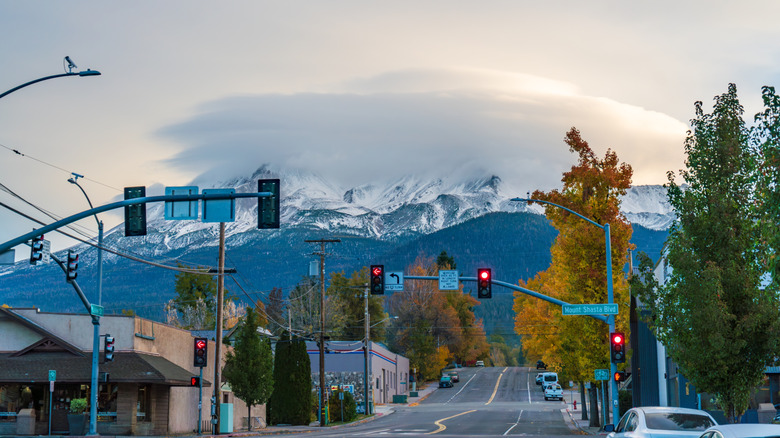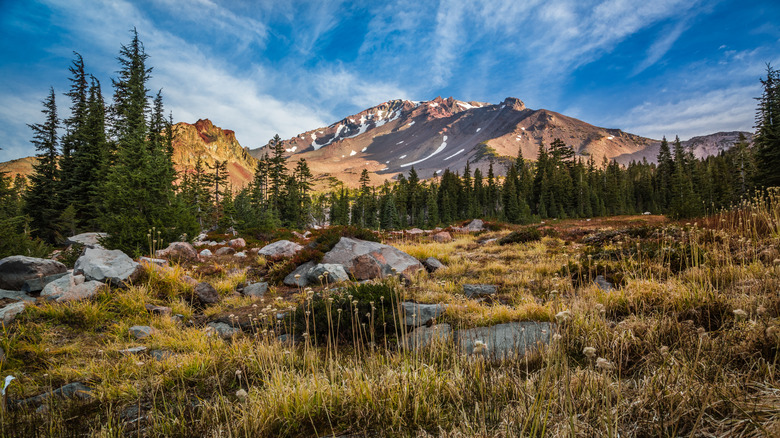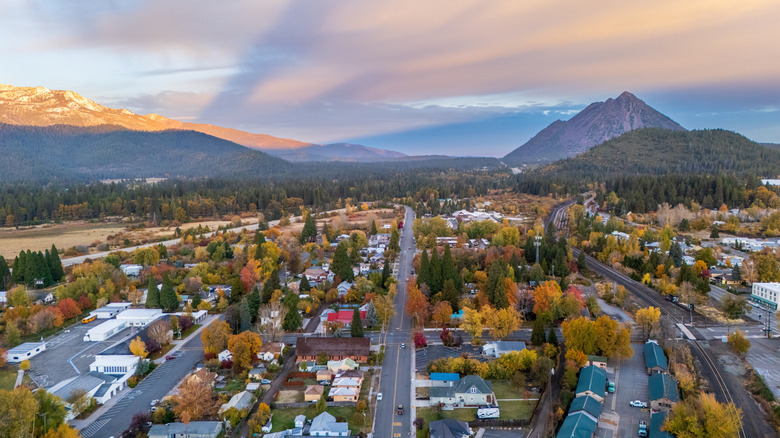Northern California’s Shasta-Cascade region is home to a dizzying array of natural splendors, including the snow-dusted volcano of Mount Shasta, the stunning ancient lava flows of Ahjumawi Lava Springs State Park and California’s own “waterfall mecca.” In the midst of all this, Mount Shasta City offers a gateway to year-round adventures, like hiking in local state and national parks, skiing, snowboarding, beginner-friendly rock-climbing routes, and your choice of lake paddling or water rafting.
Nestled in her 14,000-foot shadow, Mount Shasta’s own little town has a friendly vibe. It’s also the Shasta-Trinity National Forest and Siskiyou County’s commercial hub and home to a well-rooted new-age spiritual community. Its central location within Siskiyou County makes it the perfect jumping-off point for exploring nearby mountain towns, as well as alpine forests, glacial lakes, lava tubes, and remote wildernesses. You’ll also find everything you need to fuel your day on the volcanic mountain, including dining at Sage Restaurant or Lily’s.
Things to do in and around Mount Shasta City
The Shasta-Cascade region is heaven for hikers and mountain bikers. Popular paths within a half-hour of town include the clustered domes of Black Butte, the tumbling falls along the McCloud River Trail, and the meandering flatlands beneath the mountains known as Panther Meadows. For less-trafficked trails, you can drive south into the underrated Castle Crags State Park, where majestic panoramas of Mount Shasta and the Cascade Range reign supreme. In summer, both Castle Lake and the aptly named Heart Lake have warm waters and welcoming campgrounds, perfect for cool dips and clear reflection.
Siskiyou County’s larger bodies of water like Lake Siskiyou and McCloud Reservoir have kayak and paddleboard rentals, as well as trout fishing. Natural mineral waters abound, with geothermal bathing at Hunt, Kosk, and Big Bend Hot Springs. In winter, Mount Shasta Ski Park opens for business, with 38 trails across more than 600 acres and over 150 inches of snowfall from December to April. Sporting outlets in town like The Fifth Season and the Mt. Shasta Nordic Center offer cross-country ski and snowshoe rentals.
A number of legends dating back to Native American cosmologies and early 20th-century mysticism describe Mount Shasta as an important energy center, specifically the “root chakra of the world.” As a result, Mount Shasta City has grown a healthy wellness and spiritual community, with yoga and meditation retreats offered throughout the year. The downtown area has a concentration of metaphysical supply stores — stocked with crystals, prayer beads, astrology manuals, and more. If mysticism isn’t your thing, an altogether different kind of relaxation can be found in the scandalously named historic lumber town of Weed, just 10 miles north.




